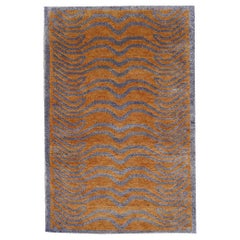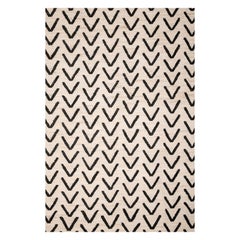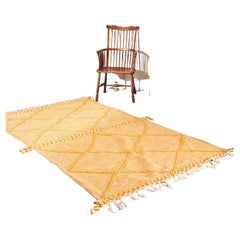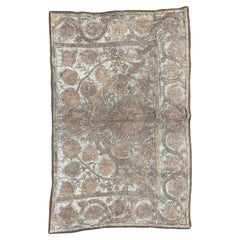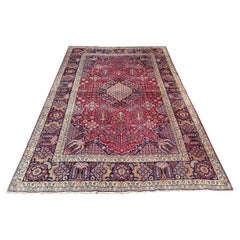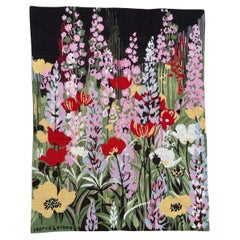Europe - Rugs and Carpets
2010s Nepalese Art Deco Europe - Rugs and Carpets
Wool, Silk
21st Century and Contemporary Indian Modern Europe - Rugs and Carpets
Jute
21st Century and Contemporary Europe - Rugs and Carpets
Wool
Late 19th Century Turkish Islamic Antique Europe - Rugs and Carpets
Silk
Mid-20th Century Asian Tabriz Europe - Rugs and Carpets
Wool, Cotton
Mid-20th Century French Art Deco Europe - Rugs and Carpets
Wool
1960s Moroccan Mid-Century Modern Vintage Europe - Rugs and Carpets
Fabric
Mid-20th Century European Aubusson Europe - Rugs and Carpets
Wool
21st Century and Contemporary Italian Modern Europe - Rugs and Carpets
Leather
1960s Swedish Scandinavian Modern Vintage Europe - Rugs and Carpets
Wool, Linen
Mid-20th Century Persian Europe - Rugs and Carpets
Wool, Silk
Early 20th Century Asian Tabriz Europe - Rugs and Carpets
Wool, Cotton
Late 20th Century Swedish Scandinavian Modern Europe - Rugs and Carpets
Wool, Linen
Mid-20th Century Tunisian Europe - Rugs and Carpets
Wool
1940s Turkish Tribal Vintage Europe - Rugs and Carpets
Silk
2010s Nepalese Art Deco Europe - Rugs and Carpets
Silk, Wool
1970s French Vintage Europe - Rugs and Carpets
Wool
1980s Pakistani Vintage Europe - Rugs and Carpets
Wool
Early 1900s Indian Agra Antique Europe - Rugs and Carpets
Cotton
Mid-20th Century French Aubusson Europe - Rugs and Carpets
Wool, Cotton
Mid-20th Century Egyptian Tribal Europe - Rugs and Carpets
Wool, Cotton
Late 19th Century Azerbaijani Kazak Antique Europe - Rugs and Carpets
Wool
Mid-20th Century French Aubusson Europe - Rugs and Carpets
Wool, Cotton
21st Century and Contemporary Indian Modern Europe - Rugs and Carpets
Jute
1940s Azerbaijani Kazak Vintage Europe - Rugs and Carpets
Wool
1960s Swedish Vintage Europe - Rugs and Carpets
Wool, Cotton
Early 1900s Asian Antique Europe - Rugs and Carpets
Wool
2010s Afghan Oushak Europe - Rugs and Carpets
Wool
Mid-20th Century Romanian Tabriz Europe - Rugs and Carpets
Wool, Cotton
1950s Danish Scandinavian Modern Vintage Europe - Rugs and Carpets
Wool
Early 20th Century French Aubusson Europe - Rugs and Carpets
Wool, Cotton
1980s Vintage Europe - Rugs and Carpets
Wool
2010s Europe - Rugs and Carpets
Wool
Late 19th Century French Aubusson Antique Europe - Rugs and Carpets
Wool
Mid-20th Century Pakistani Tribal Europe - Rugs and Carpets
Wool, Cotton
1970s Moroccan Tribal Vintage Europe - Rugs and Carpets
Wool
Late 20th Century Chinese Art Deco Europe - Rugs and Carpets
Wool, Cotton, Organic Material
Mid-20th Century Moroccan Tribal Europe - Rugs and Carpets
Wool
Early 20th Century Chinese Europe - Rugs and Carpets
Wool
Mid-20th Century French Aubusson Europe - Rugs and Carpets
Wool, Silk
1920s Persian Hollywood Regency Vintage Europe - Rugs and Carpets
Wool, Cotton, Natural Fiber, Organic Material
1950s Vintage Europe - Rugs and Carpets
Wool
Early 19th Century Hungarian Aubusson Antique Europe - Rugs and Carpets
Silk
Mid-20th Century French Modern Europe - Rugs and Carpets
Wool, Cotton, Silk
21st Century and Contemporary Spanish Modern Europe - Rugs and Carpets
Jute
2010s Italian Mid-Century Modern Europe - Rugs and Carpets
Wool
Late 20th Century Pakistani Rustic Europe - Rugs and Carpets
Wool
Mid-20th Century Asian Rustic Europe - Rugs and Carpets
Wool, Cotton
Mid-20th Century French Aubusson Europe - Rugs and Carpets
Wool, Cotton
1960s Swedish Scandinavian Modern Vintage Europe - Rugs and Carpets
Wool
1970s French Aubusson Vintage Europe - Rugs and Carpets
Wool, Cotton
1920s Asian Vintage Europe - Rugs and Carpets
Wool
Mid-20th Century Chinese Chinoiserie Europe - Rugs and Carpets
Wool, Cotton
1960s Uzbek Suzani Vintage Europe - Rugs and Carpets
Cotton
2010s Italian Europe - Rugs and Carpets
Textile
21st Century and Contemporary Indian Modern Europe - Rugs and Carpets
Acrylic
1940s French Vintage Europe - Rugs and Carpets
Wool
2010s Italian Europe - Rugs and Carpets
Fabric
Mid-20th Century French Aubusson Europe - Rugs and Carpets
Wool, Cotton
2010s Indian Heriz Serapi Europe - Rugs and Carpets
Wool
Read More
Hechizoo’s Original Sin Rug Tempts with Shimmering Copper, Tin and Bronze
Embroidered with snakes, turtles, birds and vines, it celebrates a dazzling natural world before the arrival of Adam and Eve.
Splashy Blooms Bud and Wilt in Artist Santi Moix’s Floral Rug
The colorful design captures the natural splendor of a backyard garden.
In South Africa, Rich Mnisi Is Taking Biomorphic Design to the Next Level
The rising fashion star is having his first solo show of furniture designs, at Southern Guild in Cape Town, and his far-out, snaking forms are like nothing you've ever seen.
The Artists and Designers behind Today’s Coolest Rug Collaborations
Top carpet companies are expanding the arena of artful floor coverings, seeking out creatives from other media and marrying their talents to textiles.
Tantuvi’s New Rugs Were Inspired by the Travertine Quarries of India and the Spanish Steps of Rome
The New York–based rug designers employ earthy colors and time-honored artistry in their creations.
We’re Going Gaga for the New Sasha Bikoff Rugs
The New York interior designer found inspiration in disco culture and astrology for her debut home collection.
Paradise Is Found Underfoot in These Majestic Persian Textiles
Persian garden carpets, with their timeless beauty and unmatched craftsmanship, have an enduring appeal.
12 Mesmerizing Moroccan-Style Interiors
With their rich layers, intricate patterns and elaborate lighting, rooms with a Moroccan influence are easy to spot.
